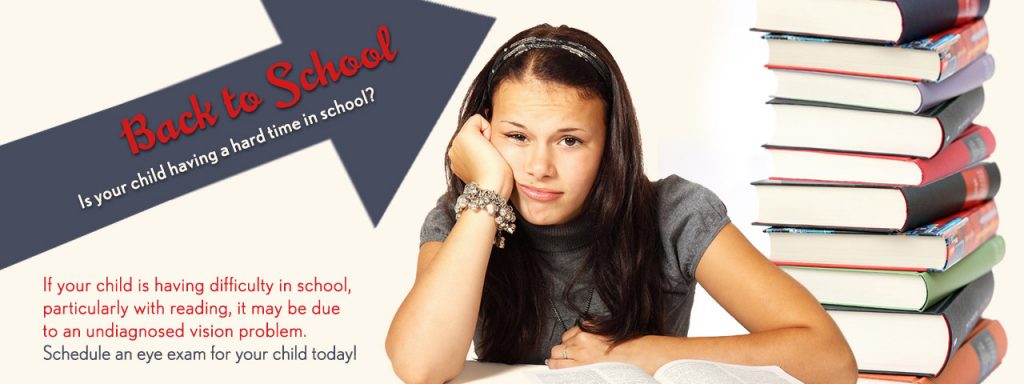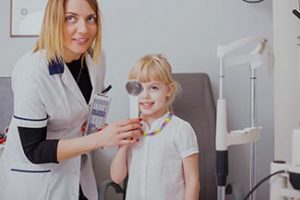Over 25% of children have an undetected vision problem that affects their academic success and athletic performance.
A diagnosis of a vision problem doesn’t necessarily mean eyeglasses are the only solution.
While many parents, teachers and children may know the signs of a distance vision problem— squinting to see the board, difficulty copying from the board, sitting close to a TV, etc.— it isn’t that easy to detect a visual problem that requires vision therapy.
When studies report that 25 percent of children have a vision problem, they aren’t referring to visual acuity problems that can be corrected with eyewear, rather a vision problem known as a visual dysfunction.
What is visual dysfunction?
Visual dysfunction is characterized by a vision problem that affects how well the eyes work together as a team.
The eye needs to work as a team in order to track across a page, keep clear focus, perceive depth, and complete the other essential visual skills necessary for success both inside and outside the classroom.
Unfortunately, school vision screenings don’t test for these visual skills, leaving many children undiagnosed for years.
Since 80 percent of learning comes through the visual system, understanding the signs of a vision problem can improve the way your child learns — preventing years of struggle, low self esteem and behavioral problems.
Now what are the signs of a vision problem— or should we say, visual dysfunction?
10 signs that your child needs vision therapy
If you answer yes to at least one of these questions, bring your child for a comprehensive vision evaluation to determine if vision therapy can treat their vision problem.
- Does your child complain of frequent headaches or eye pain?
- Does your child report that words on a page appear blurred, doubled or floating?
- Is your child reading below grade level?
- Does your child struggle to read fluently, skip lines or words of text, or have difficulty understanding text?
- Does your child close one eye or tilt their head while reading?
- Does your child struggle to pay attention during class?
- Does your child appear clumsy or have difficulty keeping up with their peers during sports activities?
- Does your child have difficulty maintaining balance?
- Does your child misjudge distances while moving in space, often bumping into objects or people?
- Does your child appear crossed-eyed (regularly or when they are sick or tired)?
If you have answered ‘yes’ to any of the questions above, make an appointment with a developmental optometrist near you who is trained and experienced in providing vision therapy.
SEE RELATED: Vision Therapy: What is the Time Commitment?
What is the next step?
If your child may be showing signs of a vision problem, make an appointment with a developmental optometrist who is trained to evaluate the entire visual system.
During your child’s visit, your eye doctor will examine your child’s eyes and assess their vision and visual skills.
If a vision problem is detected, vision therapy may be recommended to strengthen the visual skills that may be causing your child’s academic and athletic difficulties.
Can vision therapy really help my child?
Vision therapy is an effective treatment for a range of vision problems and will be individually tailored to your child’s needs.
Through the use of eye exercises, lenses, prisms, occluders, filters and other specialized tools and equipment, your child’s visual skills can improve.
The effects of vision therapy will be seen in all aspects of your child’s functioning, and their enhanced performances inside and outside the classroom can set them up for a lifetime of success.
LEARN MORE: Guide to Vision Therapy
Schedule an evaluation with an eye doctor near you, to find out if your child can benefit from vision therapy.
Over 25 percent of children have a vision problem that cannot be treated with glasses or contact lenses— but with specific and personalized eye exercises, known as vision therapy.









